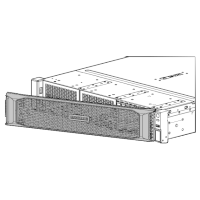 FREE DELIVERY AUSTRALIA WIDE
FREE DELIVERY AUSTRALIA WIDE LARGE AMOUNT OF INVENTORY
LARGE AMOUNT OF INVENTORY FULLY TESTED
FULLY TESTED COMPREHENSIVE WARRANTY
COMPREHENSIVE WARRANTY
  |
||
| Type | ProLiant AMD Server Memory | |
| Brand | HPE | |
| Model | - | |
| Part Number | P11446-1A1 | |
| OEM Model | M393A8G40AB2-CWECO M | |
| Memory Size | 64 GB | |
| Memory Technology | DDR4 SDRAM | |
| Rank | 2Rx4 | |
| Memory Speed | 3200MHz (3200AA) | |
| DIMM Type | Registered (RDIMM) | |
| Error Checking | ECC | |
| Form Factor | 288-pin DIMM | |
| Compatibility | *¹ FOR AMD SERVER ONLY | |
| Item Condition | Used | |
| Qty | 1x 64GB DIMM | |
| Notes |
|
|
(5160)
Can I use RDIMM on my personal computer?
RDIMMs are primarily designed for server and enterprise-grade systems, so they are not compatible with standard desktop or consumer motherboards (UDIMMs). You'll need to check your motherboard specifications to see if it supports RDIMMs.
What are the main differences between UDIMMs, RDIMMs
UDIMM
Unbuffered memory modules are the most common type of RAM used in modern PCs. These are just a type of DIMM and for most users the names are interchangeable. As the name suggests, UDIMMs do not have a buffer or a register between the memory controller and the memory chips. The memory controller, which you’ll find in the processor package itself, communicates directly with the memory chips.
RDIMM
Registered DIMMs are primarily used in workstations and servers where higher reliability and stability are paramount. RDIMMs include a register, or buffer, between the memory controller and the memory chips to help stabilize and manage the electrical load of the memory modules. This allows RDIMMs to support larger memory capacities than is possible with UDIMMs. RDIMMs tend to support ECC (Error-Correcting Code), which helps to detect and correct data corruption as well, for improved reliability.
- Ram
- Tax Invoice
- 12-Month Return to Base Warranty
Be The First To Review This Product!
Help other ACT Networks users shop smarter by writing reviews for products you have purchased.

 Shopping Cart
Shopping Cart





